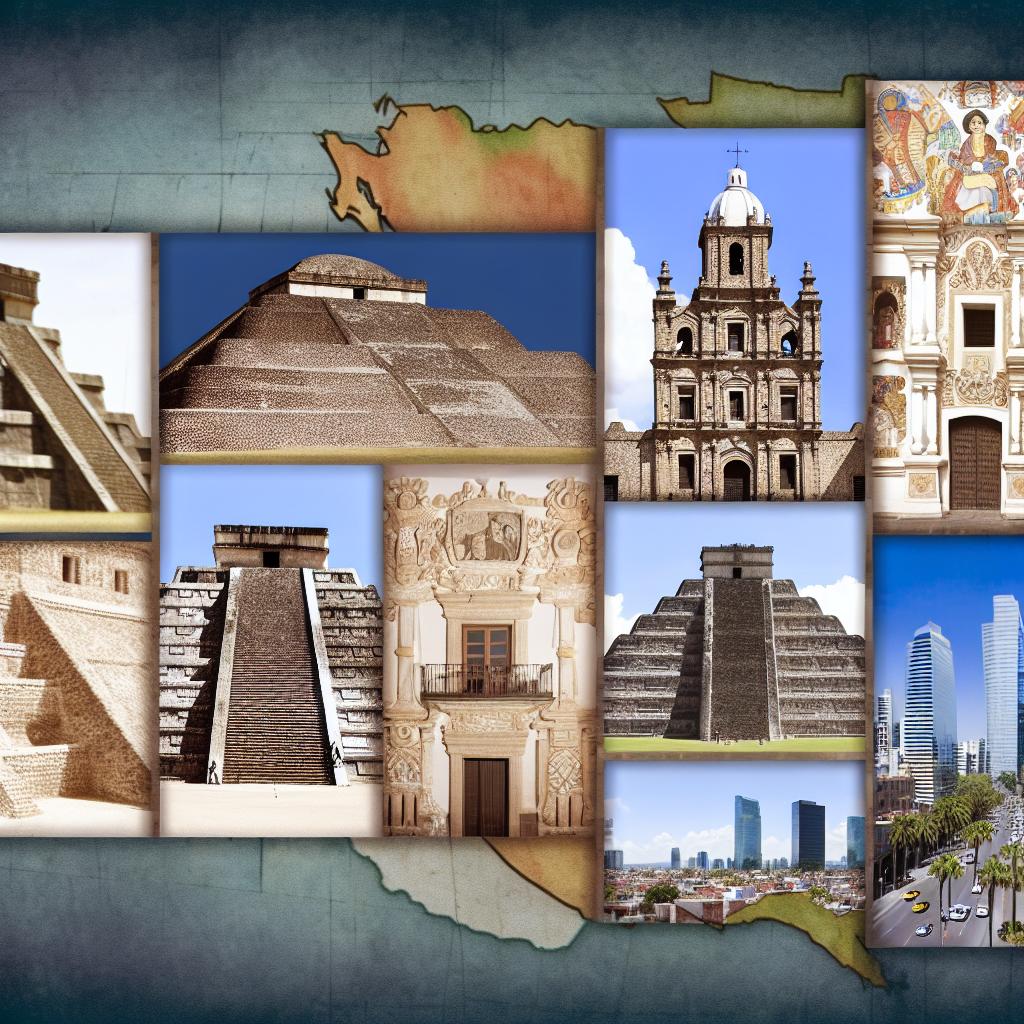Ancient Mesoamerican Civilizations
The history of Mexico does not merely begin with the Spanish conquest; it dates back to the era of ancient Mesoamerican civilizations, which rose to prominence long before European contact. These civilizations left an indelible mark on the cultural and historical landscape. Among the most notable were the Olmec, Maya, Zapotec, Teotihuacan, and Aztec cultures. These societies thrived for thousands of years, creating complex social, political, and economic systems that would lay the foundation for future civilizations.
The Olmec civilization, commonly referred to as the “mother culture” of Mesoamerica, emerged around 1200 BCE along the Gulf Coast. Although much about their origin remains a mystery, their influence is undeniable. The Olmecs established many cultural practices and traditions, including the construction of ceremonial centers and the development of a basic calendar system. The colossal stone heads they left behind have become iconic symbols of their impressive craftsmanship and artistic prowess.
Moving forward in history, the Maya civilization flourished in areas that are now parts of Mexico, Guatemala, Honduras, and Belize. Known for their advancements in writing, mathematics, and astronomy, the Maya civilization reached its zenith between 250 and 900 CE. It was during this period that they constructed city-states featuring grand pyramid-temples, such as those in Tikal and Palenque. The Maya people developed one of the most sophisticated pre-Columbian scripts in the Americas and crafted a highly precise calendar system, which scholars continue to study today for its remarkable accuracy.
The Teotihuacan civilization, on the other hand, rose to become a major power in Mesoamerica between 100 BCE and 550 CE. Located near modern-day Mexico City, Teotihuacan was a city that boasted incredible architectural feats. The Pyramid of the Sun and the Pyramid of the Moon stand as testaments to the city’s former majesty and influence. Traders and artisans thrived in the bustling metropolis, and its influence extended far beyond its immediate geographic confines.
Towards the end of the post-Classic period, the Aztec Empire emerged as a dominant force in the 14th century. Known to themselves as the Mexica, the Aztecs established Tenochtitlan, a city situated on the islands of Lake Texcoco, which became their thriving capital and the heart of their powerful empire. At the time of European contact, the Aztec Empire controlled much of central Mexico, showcasing a complex society with vibrant markets, incredible architecture, and a rich cultural life that fascinated and astonished the first Europeans who arrived.
Spanish Conquest and Colonial Era
The arrival of the Spanish profoundly altered the trajectory of Mexican history. In 1519, the Spanish explorer Hernán Cortés commenced what would ultimately be a successful conquest of the Aztec Empire. By 1521, the once mighty Tenochtitlan had fallen, signalling the start of a colonial period in Mexican history. With this conquest, Mexico became an integral part of the vast Spanish Empire, referred to as New Spain by the colonists.
Significant changes reshaped Mexican society during this colonial era. The Spanish crown sought to consolidate its power through the establishment of new urban centers and the imposition of a rigid class-based society. They introduced Christianity, leading to the widespread conversion of indigenous people, which included the destruction or transformation of indigenous temples into churches. This period also saw the emergence of a new cultural identity as indigenous and Spanish practices and traditions began to merge, informing the historical and cultural landscape of modern Mexico.
Mexico’s Struggle for Independence
The early 19th century was characterized by growing unrest. In 1810, the movement for Mexican independence from Spanish rule took hold, catalyzed by figures like Miguel Hidalgo y Costilla. His impassioned rallying cry for independence, known as El Grito de Dolores, marked the beginning of an arduous struggle. The conflict endured over a decade, finally culminating in Mexico’s independence in 1821.
However, independence also ushered in an era of political instability as the new nation faced internal divisions and external threats. These included debates over governance—whether Mexico should implement a monarchy or republic—and issues related to land reform and the rights of different social classes.
19th Century Challenges and Reforms
The 19th century proved to be a turbulent time for Mexico. The country faced significant challenges from foreign powers, including the Mexican-American War of 1846-1848. This war ended disastrously for Mexico, with the signing of the Treaty of Guadalupe Hidalgo, which ceded a vast amount of territory— including present-day California and Texas— to the United States.
Another challenging period came in the 1860s with the French intervention. In a surprising turn of events, European forces established Maximilian I as emperor from 1864 to 1867. This imperial experiment, however, was short-lived. After Maximilian’s fall, Benito Juárez emerged as a key figure in Mexican politics, working to re-establish a democratic and reformist government, largely centered around liberal reforms known as “La Reforma.”
The Mexican Revolution and 20th Century Developments
The dawn of the 20th century was marked by the Mexican Revolution (1910-1920), which was initiated to overthrow the long-standing dictatorship of Porfirio Díaz. The revolution brought about significant changes, with the emergence of various leaders and factions fighting for control and reform. The outcome led to major economic and social reforms and ultimately resulted in the creation of a constitutional republic formalized by the 1917 constitution, which, among other reforms, enshrined land and labor rights.
In the latter half of the 20th century, Mexico witnessed a predominance of political power by the Institutional Revolutionary Party (PRI), which effectively maintained control over the country for several decades. However, the end of the century saw gradual democratic transitions marked by more competitive elections and the end of one-party rule with the election of Vicente Fox from the opposing National Action Party (PAN) in 2000.
Contemporary Mexico
As it stands today, Mexico is one of the leading nations in Latin America, recognized for its rich cultural heritage and economic potential in the global arena. However, it continues to grapple with contemporary challenges that include drug-related violence, economic disparity, and the ongoing push for political reform and transparency.
Through its diverse historical narratives, from the achievements of ancient civilizations to the impacts of colonialism and the outcomes of revolutionary change, Mexico’s complex and dynamic history continues to shape its present and future. With each passing day, it is building upon this rich historical legacy to navigate the modern world.







